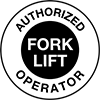Filter by
Message
Message Type
Color
Height
Width
Accident Prevention Message Type
Message Color
Message Contains
Visibility
DFARS Specialty Metals
Export Control Classification Number (ECCN)
Thickness
Header Color
Specifications Met
Communication
Safety Equipment






























